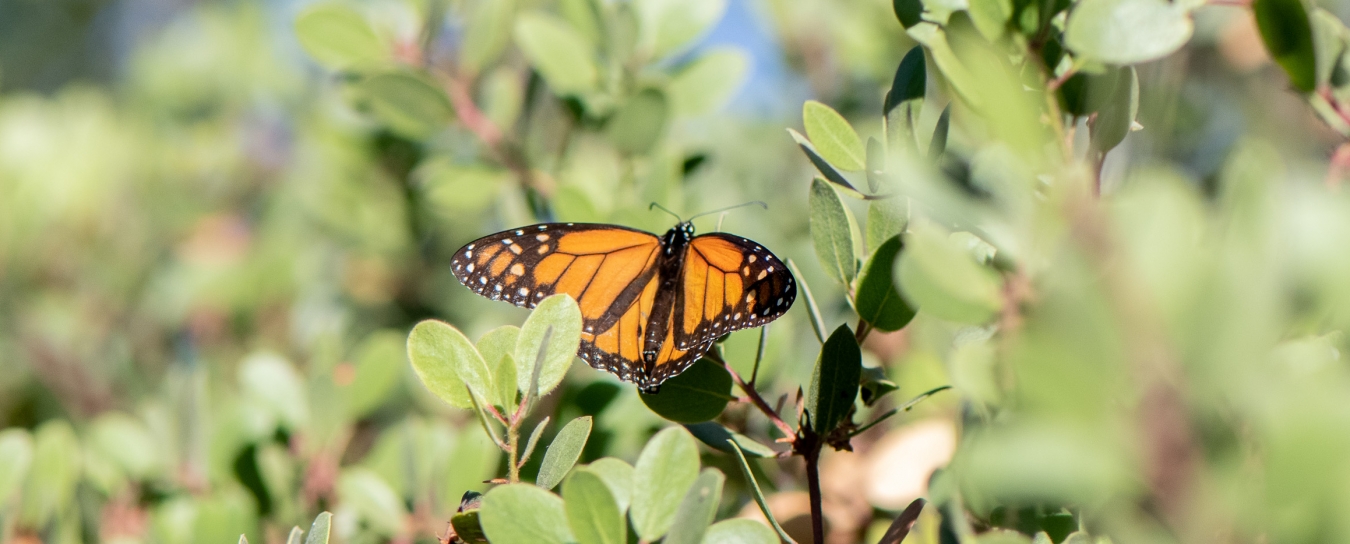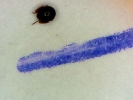
Invertebrates
See our handy guide to critters found in local homes and our Central Coast Butterfly FAQ. Browse the insects and other terrestrial arthropods we’ve identified. Check out local marine invertebrates, particularly bivalve mollusks and intertidal organisms.
- Anthropology
- Rocks & Fossils
- Invertebrates
- Vertebrates
- Botany
- Astronomy
- Fungi
- General
- Recently Asked
What is this extremely small bug thing?
It's about the side of 9pt felt tip pen dot. It didn't seem to jump. It crawled onto an iPad in our house. It didn't quite look like a dust mite or bed bug. We thought maybe a plant mite?

Curator Response
Hi Tom,
Thank you for the question. This provides a great opportunity to discuss possibly the most vast unknown in all of entomology…mite diversity!
What you photographed here is an example of a group of mites called oribatid mites, meaning they belong to the order Oribatida, one of the six orders of mites. Most members of this group live in soil and quietly feed on decaying matter (these are not parasites like other types of mites can be), and they can make up a huge proportion of the biomass in such situations. If you have potted plants in your house, it may have clambered out of the soil from one of those. There are over 1,000 species of this group recorded from North America, but the amazing thing is that this number is probably just a tiny fraction (maybe 10-20%) of the actual number of species! These mites are consistently small creatures (the largest ones are barely over 1 millimeter) and fairly innocuous, and therefore haven’t received even the most basic study in many cases.
Oribatid mites come in all kinds of crazy shapes and may sport crazy ornamentations. Some are long-legged with grooves, some are flattened from side to side and close up like an armadillo, while others are covered in big spiky hairs! Most of the features that distinguish the species from one another are quite small and difficult to see, but often the shape is a great clue to which major group it belongs to. Fortunately, although the resolution is not ideal for this ridiculously tiny critter, I can tell that this one probably belongs to the family Galumnidae. This group is distinguished by the large, ear-shaped “pteromorphs” or wing-like structures along the sides of the body. These function as movable armor plates, protecting the mite’s appendages when folded up. These mites are also extremely smooth and glossy, which is how this one ended up with that unusual dotted circle pattern on its back...I’m thinking that’s a reflection of your camera flash! The two slender structures sticking out of the front are the first pair of legs (as arachnids, they have four pairs total as adults).
There are about 50 species of Galumnidae reported from North America and 10 species from California, but again, there are probably many times more species actually living out there!
Schlinger Chair and Curator of Entomology Matthew L. Gimmel, Ph.D.


